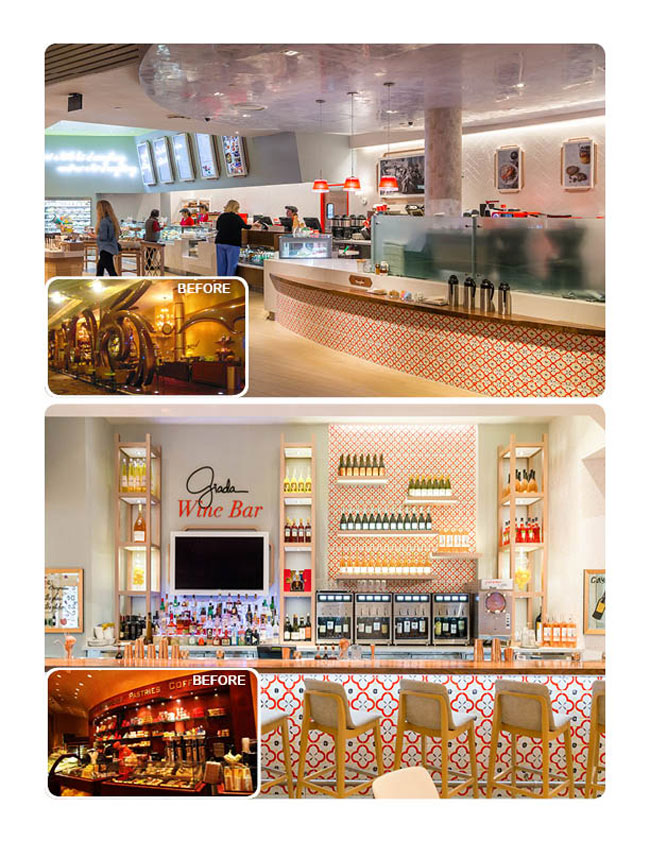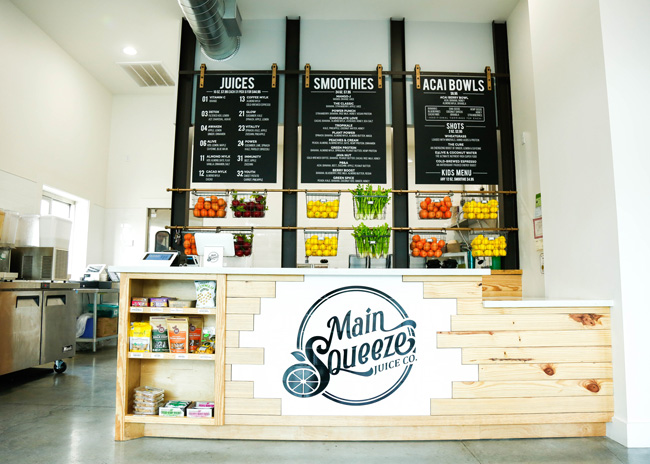 starrdesign team led the successful redevelopment of a vacant Las Vegas space and created Pronto by GiadaWhy is redeveloping an existing restaurant space more expensive than expected, and what can I do to keep costs down?
starrdesign team led the successful redevelopment of a vacant Las Vegas space and created Pronto by GiadaWhy is redeveloping an existing restaurant space more expensive than expected, and what can I do to keep costs down?
As the market for restaurant real estate becomes more competitive and construction prices continue to rise at unprecedented rates, several of our clients are looking at taking over space previously occupied by other restaurants. Those unfamiliar with this type of development often think they’re getting a great deal because so many required elements of a typical restaurant build-out are in place. Landlords and brokers frequently point these items out and tout potential savings. Unfortunately, rarely do these existing conditions work out the way they’re promoted. We’re often asked why redeveloping a vacated restaurant space is so expensive and what can potential new tenants or owners do to control those costs. There are three simple things that all restaurateurs can do to keep these costs down, but first we must understand why the costs may not be as low as originally anticipated or promised.
There are two key things that influence the costs of developing or taking over an existing restaurant.
- The former restaurant that occupied the space most likely failed. It’s hard to know the number of changes required to convince customers that there is a totally new concept and operation in a failed space. Finding that point is difficult and falling short of it can mean continued failure. Meanwhile, blowing past the desired conversion point can mean overspending and making a reasonable return on investment almost impossible. So, defining the minimum changes and the minimum investment required to exorcise the demons from the failed restaurant is critical.
- There are many variables associated with redeveloping a vacated restaurant space. Many people think that because there was a previously operating restaurant in the space, that much of the equipment, building utilities and existing build-out can be reused. While many people may tell you that all the existing conditions are grandfathered in, the threshold for reusing existing elements may not meet current requirements. Unfortunately, regardless of what landlords or brokers may tell you, there are numerous unknown factors related to reusing existing items, from updated building codes and changes in use to equipment condition and lifespan. Every jurisdiction sets its own requirements for allowing nonconforming existing conditions — and these requirements are getting stricter.
Now that you know why the costs might be potentially higher than you originally expect and why reusing many of the existing items might not be recommended (or feasible), here are three simple things everyone can do to understand the true costs associated with redeveloping an existing restaurant site and how to control these costs:
- Do your homework. As soon as you identify a potential existing restaurant location and execute a Letter of Intent to acquire the location, we highly recommend you work with professionals that can help you with thorough due diligence. This may mean speaking with your architect to identify and understand any potential existing areas that are noncompliant with current building, zoning and health codes. It could also mean working with your contractors to examine the building systems – especially the HVAC system and kitchen exhaust system – to make sure they’re in good working order and have reasonable life left in them. Do the same with your kitchen equipment vendor on the refrigeration system, and the electrical and mechanical components of the existing foodservice equipment. Don’t make assumptions, and be sure to verify everything so you can clearly ascertain the true costs.
- Locate the documents.There are two different sets of documents that contain critical information that will help with the due diligence mentioned above. The two sets of documents are the base building construction drawings and the latest tenant upfit construction drawings. These should include civil, landscape, architectural, structural, food service, plumbing, mechanical, electrical and fire protection drawings. There will likely be several things that are not readily visible, even with the most experienced and thorough site investigation. You need to look at the size of the grease interceptor, under-slab plumbing, exhaust duct sizes, etc. The accuracy of this information can easily swing a project budget almost $100,000 in one direction or another, and, in many cases, the only place to find this information is in a detailed set of construction drawings. In many cases, these documents are available through the landlord or property seller. They also are often available for a small fee from the local building department. Really good real estate brokers will make it their responsibility to find and copy these documents for the project team’s use.
- Verify the fit.We strongly recommend preparing a test fit or a preliminary layout as early as possible to determine which aspects of your ideal layout, including cookline, prep kitchen, bar, seating, etc., will fit in this specific location. For example, even though a kitchen exhaust hood exists, it might not accommodate your standard equipment line-up. Something like this might lead to either an atypical operation or require significant changes. Either option may be the difference between success or failure. Another thing we often see is an assumption on the number of seats and / or tables able to fit in each space based on its square footage or what was existing. Many times, we find that once a test fit is performed and the actual kitchen is laid-out in a space with a nonstandard shape, either more extensive modifications are required to get the necessary seating capacity or seating capacity becomes secondary to saving money. In either case, the ability to meet the desired ROI is compromised.
These are three simple and very low-cost things you can do to better ascertain the true costs associated with redeveloping an existing restaurant. Once the true costs are determined, it’s much easier to either negotiate up front to address these costs or look at other design alternatives to mitigate these costs.
Interested in taking a deeper dive into this topic? Check out Restaurant Reclamation: Taking Over a Failed Restaurant Space
Steve Starr, president of starrdesign in Charlotte, N.C., is a nationally recognized leader in restaurant and retail design. While his insight and expertise span the hospitality industry, his focus is on branding, consumer behavior and the development process.
Do you have a problem? Would you like three solutions? Email us.



